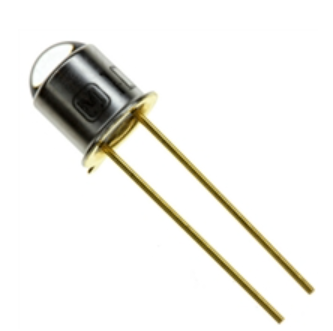Date:2025-06-27 Categories:Product knowledge Hits:273 From:Guangdong Youfeng Microelectronics Co., Ltd
Phototransistor is a semiconductor device that can convert optical signals into electrical signals. It is a photosensitive element based on a common transistor structure, which is a photoelectric conversion device, also known as EP2S90F1020I4N photosensitive transistor. The photoelectric transistor has the basic structure of a regular transistor but with the addition of photosensitive materials in the base region, it can respond to light and convert optical signals into electrical signals. Phototransistors are commonly used in fields such as photoelectric control, photoelectric measurement, and photoelectric detection.
1、 Structure and Working Principle of Phototransistor
The structure of a phototransistor is basically the same as that of a regular transistor, both including a base region, an emitter, and a collector. Unlike ordinary transistors, phototransistors add photosensitive materials in the base region, allowing them to respond to light and convert optical signals into electrical signals.
The working principle of a phototransistor is basically the same as that of a regular transistor, except that under illumination, photons are absorbed and excite electrons and holes, causing a change in the concentration of electrons and holes and thus altering the conductivity properties of the base region. When the base of the phototransistor receives light, electrons and holes are excited and recombine in the base region, causing a change in the conductivity of the base region. The change in conductivity will affect the changes in collector current and emitter current, thereby achieving the conversion of optical signals to electrical signals.
2、 Classification of Phototransistors
Phototransistors can be classified into silicon phototransistors, germanium phototransistors, GaAs phototransistors, etc. based on different photosensitive materials. Among them, silicon phototransistors and germanium phototransistors are the two most common types of phototransistors.
1. Silicon phototransistor
A silicon phototransistor is a photosensitive element based on the structure of a silicon transistor. The photosensitive material of silicon phototransistors is usually silicon, which has low sensitivity and slow response speed, but is relatively inexpensive and widely used in some low-frequency, low-speed photoelectric control, measurement, and detection fields.
2. Germanium phototransistor
Germanium phototransistor is a photosensitive element based on the germanium transistor structure. The photosensitive material of germanium phototransistors is usually germanium, which has high sensitivity and fast response speed, but is relatively expensive. Germanium phototransistors are widely used in high-frequency, high-speed optoelectronic control, measurement, and detection fields.

Previous: Classification, Structure, and Principle of MOSFET